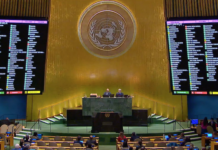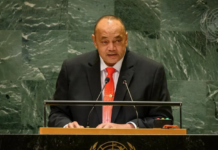
A new online survey by Te Ipukarea, the National Māori Language Institute at Auckland University of Technology (AUT), confirms that attitudes towards Te Reo Māori are changing.
“Both Māori and Pākehā think that Te Reo Māori is an important part of New Zealand’s national identity and should be compulsory in primary schools. This is what people want for their children and grandchildren,” says Professor Tania Ka’ai, director of Te Ipukarea.

The vast majority of survey respondents agree or strongly agree that the Māori language should be compulsory in New Zealand primary schools, including 83 percent of Māori, 80 percent of New Zealand European/Pākehā and 78 percent of other ethnicities.
An even larger proportion – 95 percent of Māori, 94 percent of New Zealand European/Pākehā and 90 percent of other ethnicities – agree or strongly agree that the Māori language is an important part of New Zealand’s national identity.
The pop-up survey was completed by 5391 visitors to the Te Aka Māori-English Dictionary online.
Conducted in partnership with the Māori Language Commission, the survey sought to gather data on how the online dictionary is used, the language proficiency of users and attitudes towards Te Reo Māori.
Those surveyed identified as Māori (58 percent), New Zealand European/Pākehā (35 percent) and other ethnicities (7 percent). They were evenly distributed by age. And, the largest groups by occupation were professionals (37 percent) and students (20 percent).
Looking for inspiration
Professor Ka’ai says the rest of the world looks to New Zealand for inspiration and guidance on how to keep indigenous language alive.
Scandinavian countries like Finland, Norway and Sweden are exploring Māori language immersion models such as Kura Kaupapa and Kohanga Reo – the latter of which was the archetype for Hawai’i’s Pūnana Leo.
“We are world leaders in language revitalisation. The next step is for government to make Te Reo Māori compulsory in primary schools. Now, let’s lead the world in this,” says Professor Ka’ai.
According to Statistics New Zealand, 377,073 students were enrolled in New Zealand primary schools in 2016 – 72 percent received no Māori language education, 25 per cent studied Māori as a subject or equivalent and 3 percent were involved in Māori language immersion.















































